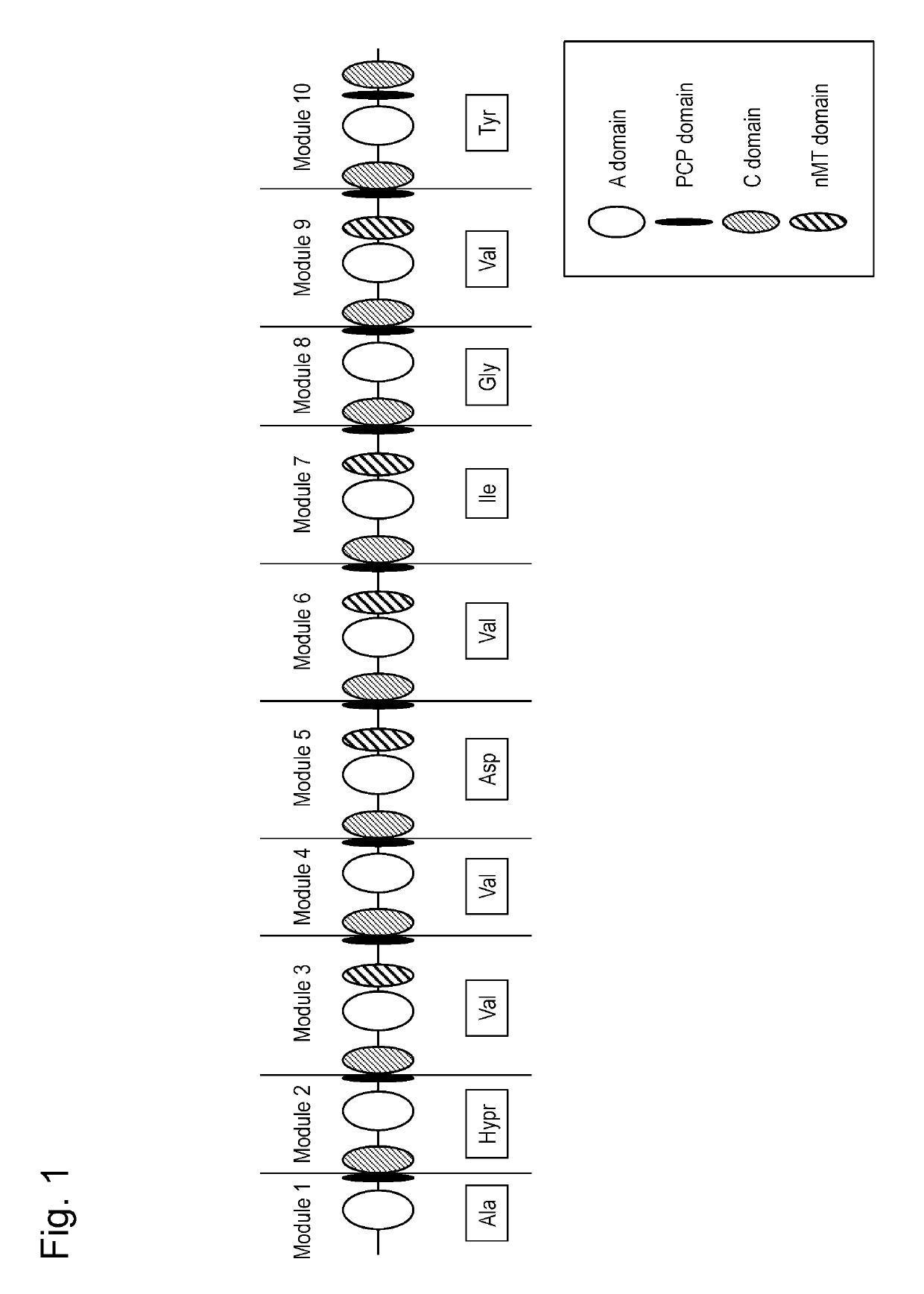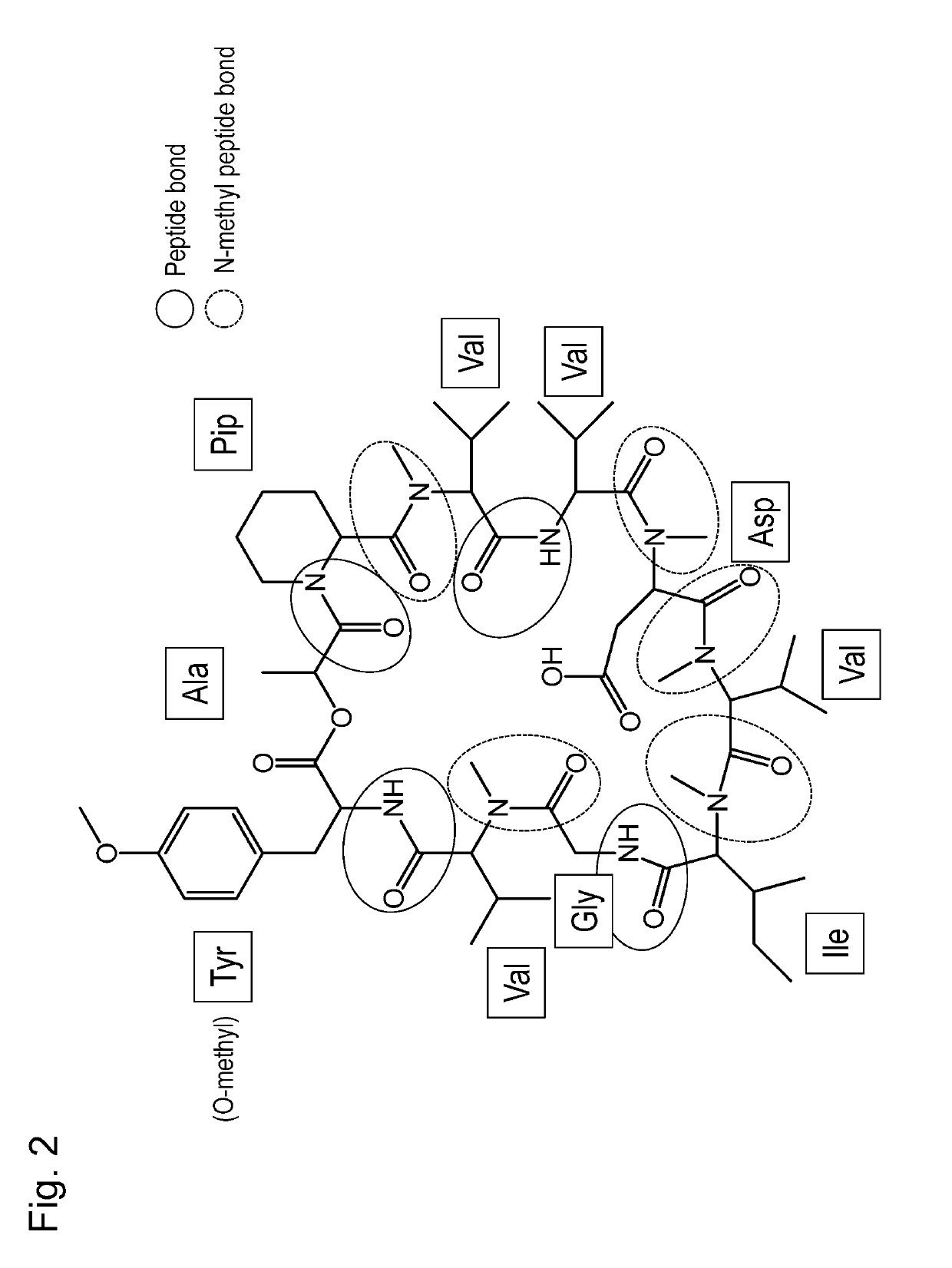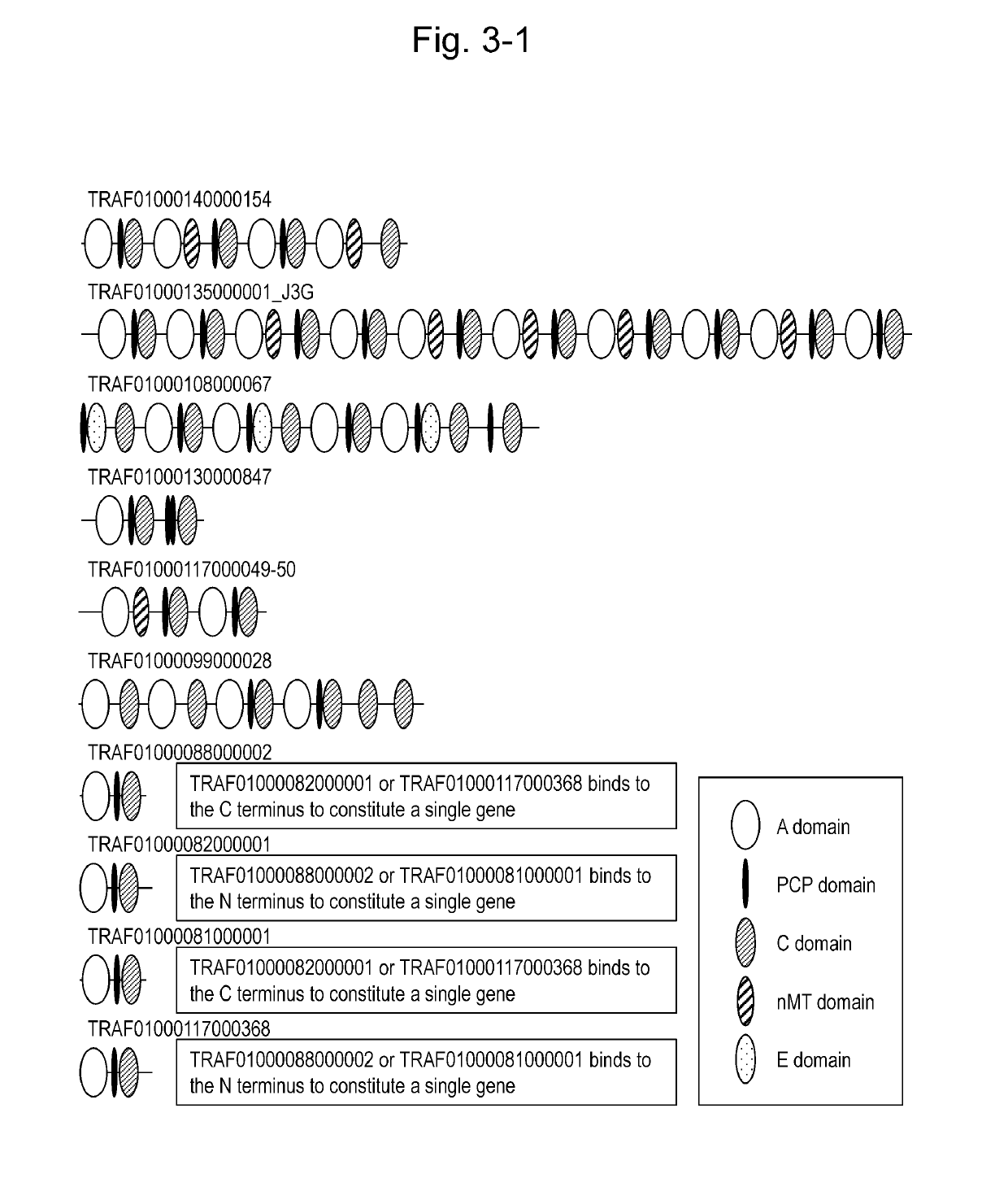Gene involved in synthesis of cyclic peptide compound, method for producing cyclic peptide compound using the same, and transformant comprising the same
- Summary
- Abstract
- Description
- Claims
- Application Information
AI Technical Summary
Benefits of technology
Problems solved by technology
Method used
Image
Examples
example 1
[0139][Genomic Analysis of Curvularia clavata]
[0140]Conidiospores of the C. clavata BAUA-2787 strain provided by Akita Konno Co., Ltd. were inoculated into 200 ml of CM liquid medium (a 500-ml triangular flask), and culture was conducted at 26° C. and 130 rpm for 48 hours. The cultured cells were harvested with the use of Miracloth, a spatula was pressed against the cells for dehydration, the dehydrated cells were introduced into a mortar, which had been cooled to −20° C. in advance, and liquid nitrogen was injected thereinto for freezing. The frozen cells were quickly fractured with the use of a pestle to result in a powder state, and genomic DNA was then extracted using the DNeasy Plant Maxi Kit.
[0141]Genomic analysis was performed using two types of next-generation sequencers (5500 xl SOLiD (life technologies) and MiSeq (illumina)). A library was prepared from genomic DNA of the C. clavata strain using the 5500 SOLiD Mate-Paired Library Kit (for 5500 xl SOLiD) and the Nextera DNA...
example 2
[0175]In this example, functions of the transcription factor genes among the group of genes included in the KK-1 biosynthetic gene cluster deduced in Example 1 were analyzed. In this example, the gene encoding the transcription factor denoted as “TRAF01000068000005” in Example 1 is denoted as “TF068-005.”
[Analysis Using Transcription Factor High-Expression Strain]
1) Construction of TF068-005 High Expression Construct (FIG. 7)
[0176]FIG. 7 schematically shows a construct achieving high-level expression of the TF068-005 gene. In this construct, a region from the initiation codon to a position 1,000-bp upstream therefrom of the Ccnmt1 (TRAF01000124000183) gene of the C. clavata BAUA-2787 strain was designated as the promoter, a 355-bp downstream region of the Ccnmt1 gene was designated as the terminator, and the Aureobasidin A (AurA)-tolerant gene was used as the selection marker. The promoter and the terminator of the Ccnmt1 gene were amplified via PCR using C. clavata genomic DNA as a...
example 3
[0226]In this example, gene-deleted strains of the genes included in the KK-1 biosynthetic gene cluster deduced in Example 1 were prepared and functions of the genes were analyzed.
1) Construction of Cluster Gene-Deleted Construct (FIG. 19)
[0227]Except for the TRAF01000068000005 (i.e., the transcription factor gene) examined in Example 2, an upstream region of about 1,000 bp and a downstream region of about 1,000 bp of each gene included in the KK-1 biosynthetic gene cluster were designated as L-arm and R-arm, respectively, and both gene-fragments were obtained via PCR using genomic DNA of the C. clavata BAUA-2787 strain as a template. Also, the pyrG gene serving as a transformant selection marker was amplified via PCR. Subsequently, L-arm, the pyrG gene, and R-arm amplified via PCR were successively ligated to each other, and the resulting fragment was inserted into pUC19 using the In-Fusion Cloning Kit (Clontech), so as to prepare a gene-deleted construct (FIG. 19).
[0228]The sequen...
PUM
| Property | Measurement | Unit |
|---|---|---|
| Fraction | aaaaa | aaaaa |
| Angle | aaaaa | aaaaa |
| Angle | aaaaa | aaaaa |
Abstract
Description
Claims
Application Information
 Login to View More
Login to View More - R&D
- Intellectual Property
- Life Sciences
- Materials
- Tech Scout
- Unparalleled Data Quality
- Higher Quality Content
- 60% Fewer Hallucinations
Browse by: Latest US Patents, China's latest patents, Technical Efficacy Thesaurus, Application Domain, Technology Topic, Popular Technical Reports.
© 2025 PatSnap. All rights reserved.Legal|Privacy policy|Modern Slavery Act Transparency Statement|Sitemap|About US| Contact US: help@patsnap.com



